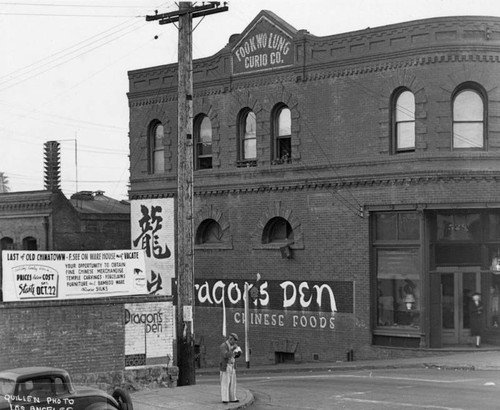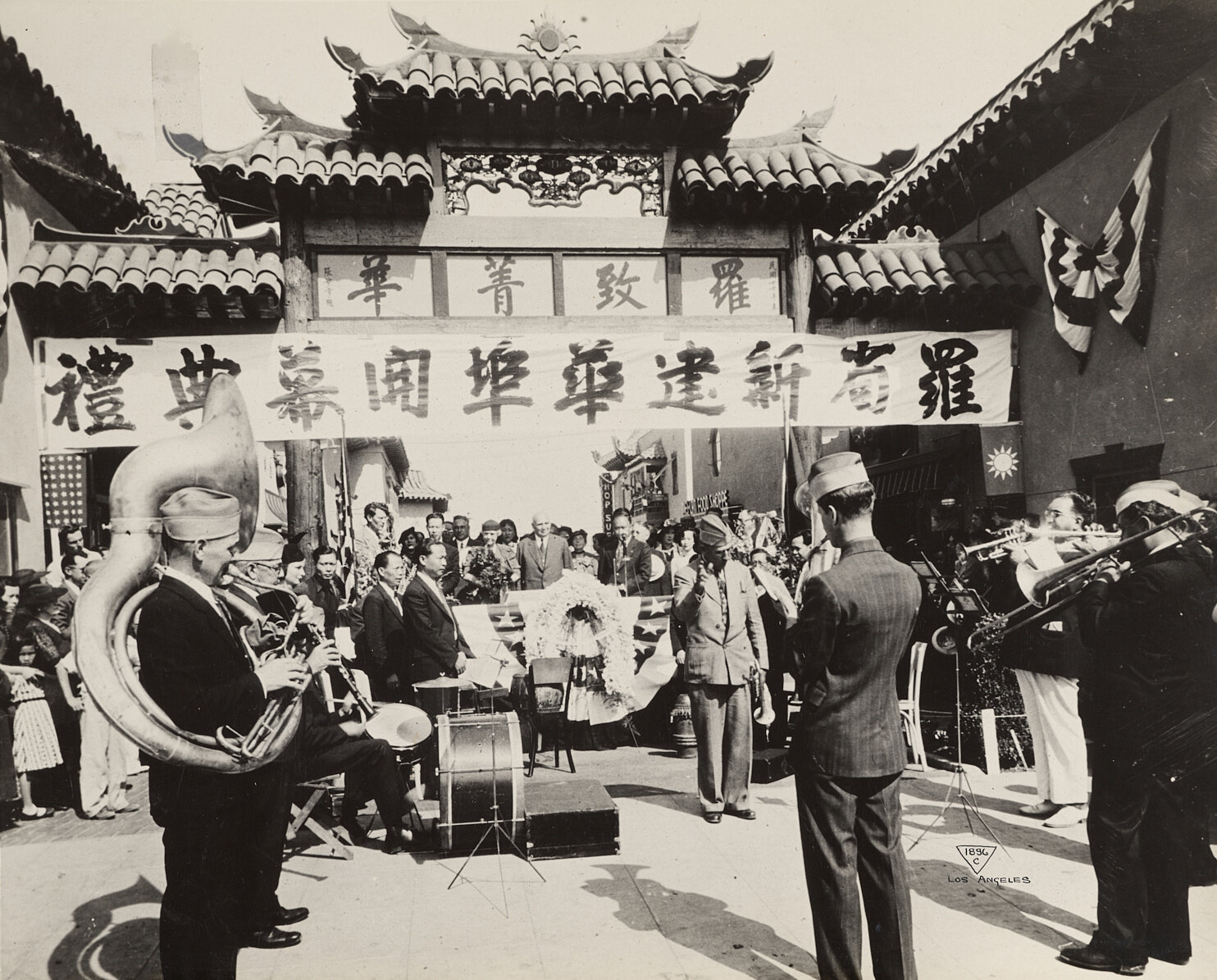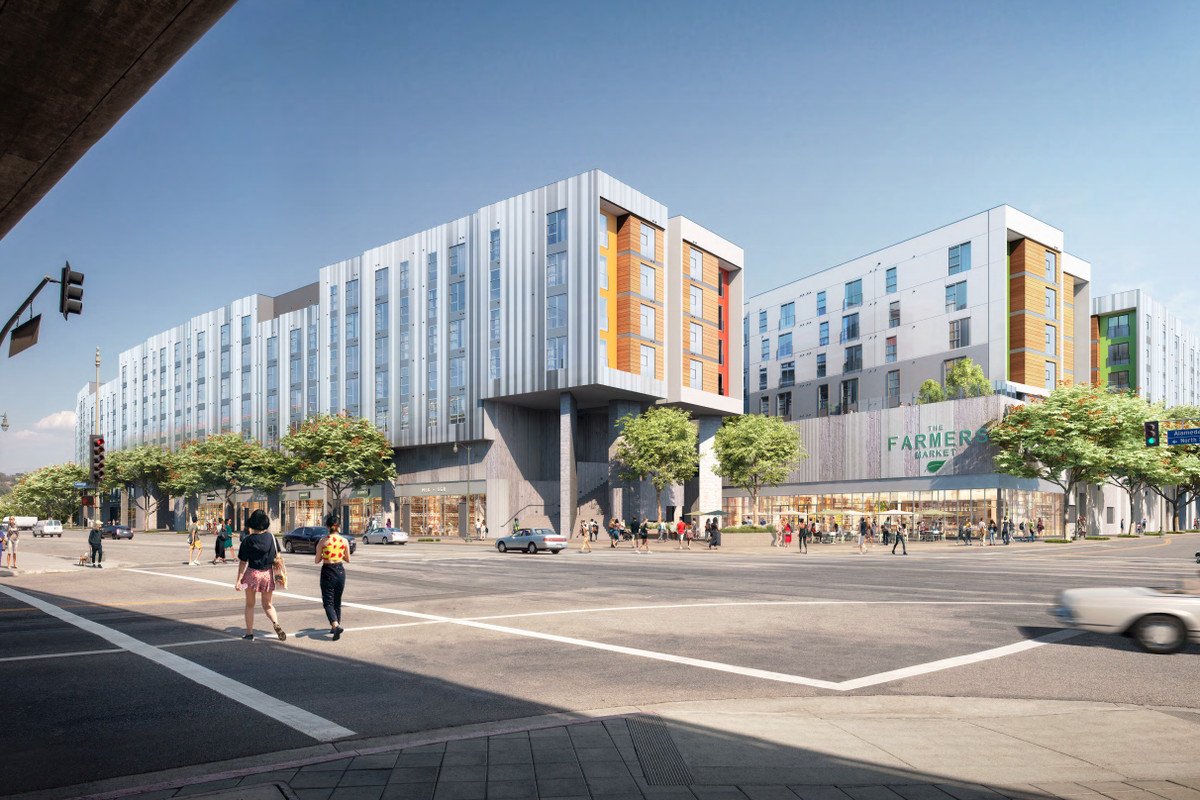
Changing Landscape
(History + Timeline)
Rise and Fall of Old Chinatown: 1st Wave Displacement (1870-1930)
Old Chinatown (Photo: Los Angeles Public Library Collection)
Opening day of New Chinatown in Los Angeles (Photo: Huntington Digital Library)
1870 - Settlement of Chinese workers in Los Angeles after the completion of the Transcontinental Railroad. The Chinese population grew to 3,000 over the new few years. An small ethnic enclave was formed, which included stores, schools, temples, etc.
1913 - The California Alien Land Act barred Asian immigrants from owning land.
1935 - A quarter of Old Chinatown community was razed to make way for the construction of the new Union Station Passenger Terminal.
1937 - Residents and businesses in Old Chinatown were displaced and relocated a few blocks northwest to present-day New Chinatown.
1938 - The New Chinatown community debuted with the grand opening of Central Plaza.
1940s - The rest of Old Chinatown was demolished to make way for the 101 Freeway. Only a portion of the Garnier building in Old Chinatown remains, which houses the Chinese American Museum today.
Modern Day Challenges of the New Chinatown: 2nd Wave of Displacement (2000-Present)
2014 - Jia Apartments on 637 N. Broadway opens with 280 market-rate units and no affordable units.
2016 - Blossom Plaza mixed-development rises on 900 N. Broadway with 237 housing units with 20% reserved for affordability.
2018 - Residents at The Metro @ Chinatown Senior Lofts apartments fight an 8% rent increase.
2018 - LA City Planning Commission approves the College Station project, a mixed-use development by Atlas Capital Group consisting of commercial space and 725 units of market-rate housing on N. Spring and College St. None of these units are designated as affordable.
2019 - The only remaining full-service grocery market in Chinatown Ai Hoa was forced to relocate due to high rents.
2019 - City approves the Llewellyn project with 318 market rate units and no affordable units located a block from the Chinatown Metro Station and east of the LA State Historic Park. The project was completed in 2021 with rental rates ranging from $2,125 to $4,800 per month.
2019 - City approves the Harmony high rise development project for 187 market rate units and only 9 affordable units. The project displaced a strip mall on 942 N. Broadway where local favorite Pho Broadway was located. Construction started in 2021 and is slated for completion in 2023.
Post-COVID Challenges
2020 - The landlord of Hillside Villa Tom Botz raises rents--some tenants experienced increases from $900 to over $3,000. Tom Botz issues 3-day eviction notes. The City Council seeks funding for $45M to purchase the building.
2020 - VF Development purchased 920 Everett with plans to convert the building to luxury market rate housing. VF Development issues eviction notices to its tenants during the COVID-19 pandemic in order to renovate the building. The building is vandalized and tagged with graffiti.
2021 - Residents in 16-story Cathay Manor senior housing building are trapped without working elevators for weeks.
2021 - Dynasty Shopping Center is sold and faces possible redevelopment and evictions of low-income immigrant vendors from Southeast and East Asia who have served our Chinatown community for decades.
Jia Apartments with no affordable units
College Station rendering of market rate housing (Photo: Johnson Fain)
920 Everett vandalism and evictions (Photo: CCED)





